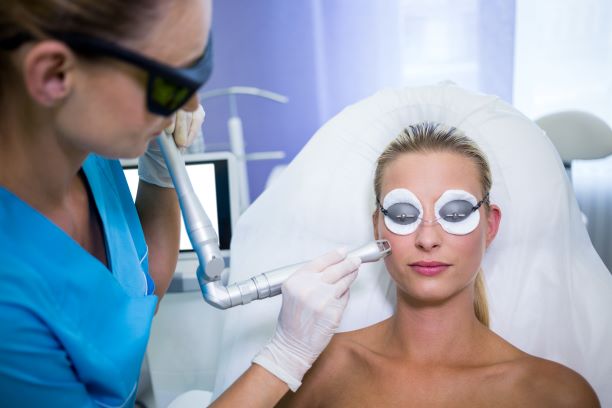LASER is a source of intense light energy. The Laser rays penetrate the skin layers without causing any harm and reach the deep-seated hair follicles. There the light energy is converted into heat which partially destroy the hair roots. That’s the reason hair reduction requires repeated sessions of laser treatment.
Risks and Side Effects of LASER
1. Skin Burn:
LASER is very specific in targeting the hair roots without harming the skin because the LASER is specifically captured by melanin, a pigment abundantly found in black hair roots. If there is an excess of melanin in Skin (i.e. Dark Skin Colour) the Laser rays will be trapped at skin surface and may cause unwanted burn on skin. So, for a Safe Hair Reduction, the Hair should be thick & dark, while the skin should be soft & fair in colour.
2. Paradoxical increase in Hair Growth:
LASER should not be done on already soft & fine hair. LASER has an opposite effect on soft and fine hair which will be converted into dark and coarse hair. This phenomenon is called “Paradoxical Hair Growth”. It’s extremely difficult to treat paradoxical hair growth.
3. Injury to Eye:
If eyes are directly exposed to LASER rays, there may be serious injury to eyes including permanent loss of vision. So, during LASER treatment the eyes should be fully covered, and the laser practitioners should wear special eye protection to filter out the laser rays. No unauthorised person should be allowed to enter the laser room and everybody inside the laser room should wear proper eye protection.
Although LASER is a very good treatment to get rid of unwanted hair from face & body, due to significant risks of skin burn, eye injury & paradoxical hair growth it is advised to undergo this procedure after consultation with an expert skin specialist, or under a dermatologist’s supervision.


